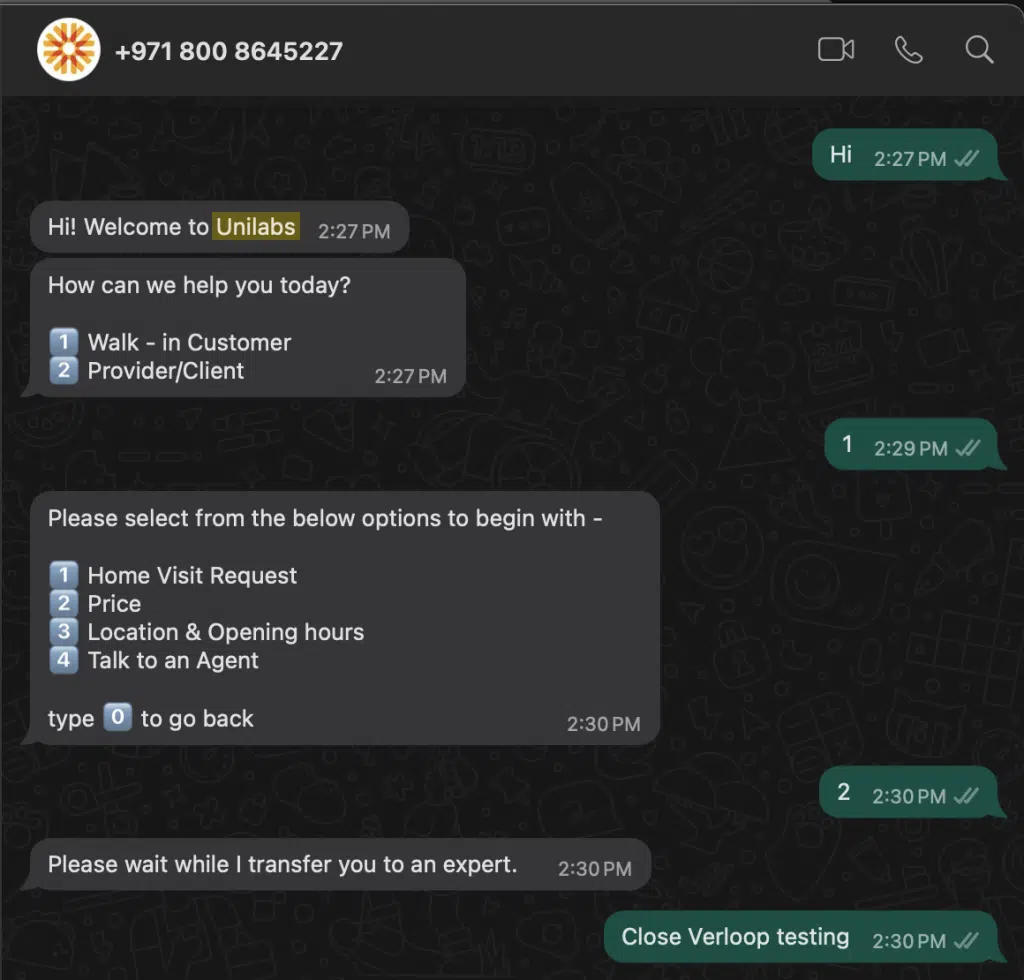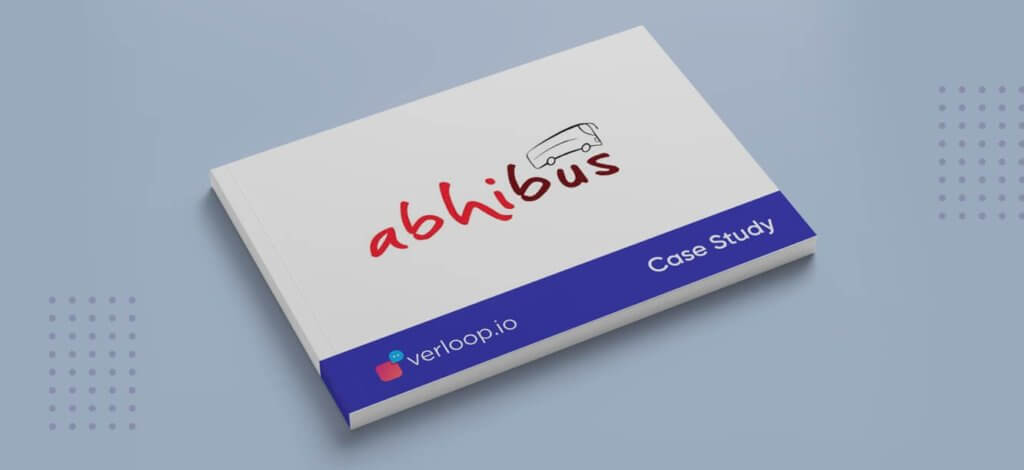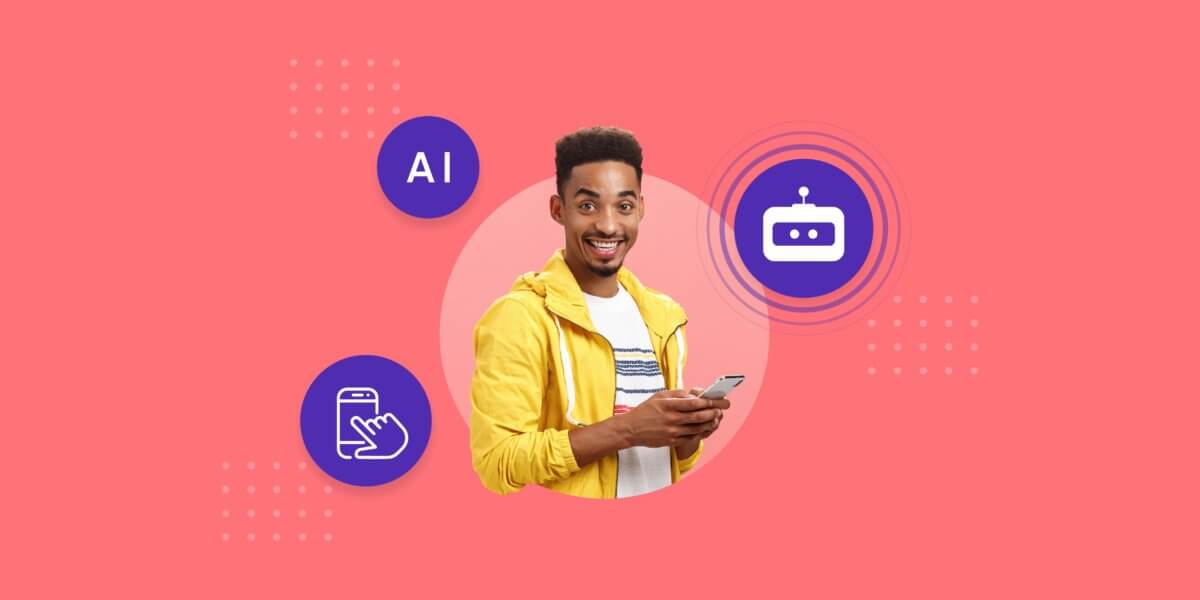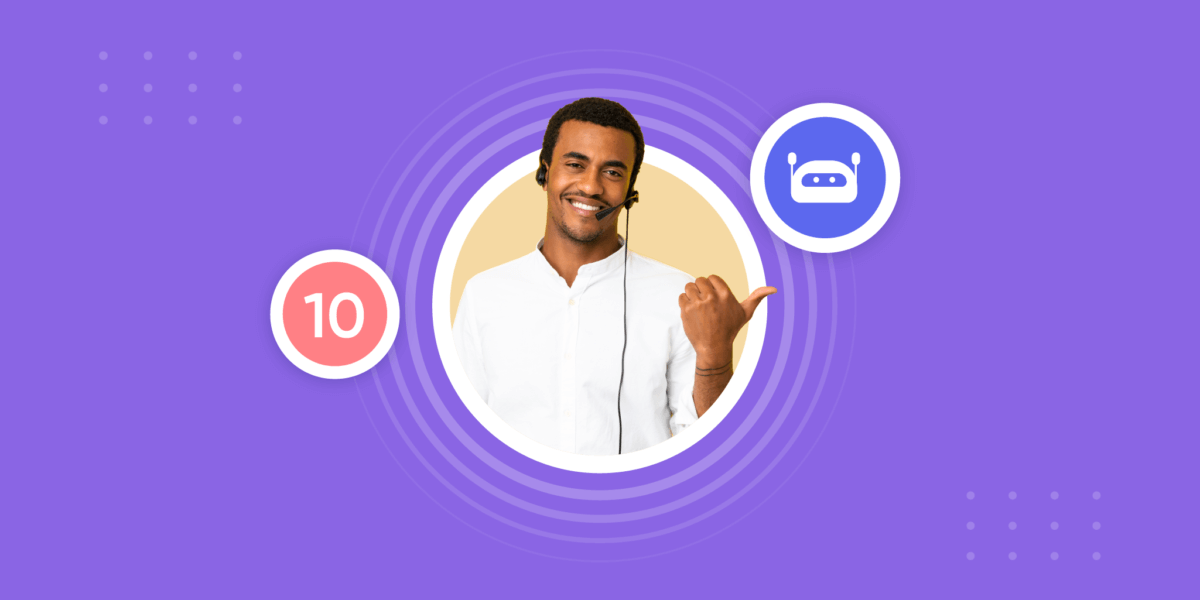
A customer visits your site late at night with a question about their recent order. Instead of waiting hours for a response, they’re instantly assisted by an AI Agent that pulls up their order details, provides real-time updates, and even helps process a return —without human involvement.
This kind of seamless support is becoming the norm. Businesses that use AI-powered chatbots have seen up to an automation of 70% support queries and faster resolution times. AI Agents are not just answering questions—they’re personalising conversations, handling complex workflows, and helping teams scale support effortlessly.
Having your query clarified in real time does wonders for your customer success and satisfaction scores. The best examples of chatbots record some of the highest fulfilment rates with the lowest response times.
Instead of having a 200+ support team on cellphones and computers handling a blizzard of calls and emails, a chatbot allows you to engage customers with a skeletal crew of reps.
In this article, we will talk about the 10 best chatbot examples to improve customer service.
What Are AI Agents or Generative AI Chatbots for Customer Service?
An AI Agent in customer service is a virtual assistant powered by artificial intelligence that can understand, process, and respond to customer queries in real-time—without human intervention. Unlike traditional rule-based chatbots, AI Agents use Natural Language Processing (NLP) and Machine Learning (ML) to understand context, intent, and even sentiment, making them capable of handling complex conversations.
Let’s say a customer wants to know the refund status of a returned product. An AI Agent can identify the user, access the order details from your CRM, confirm the return status, and even process a refund—just like a human agent would. But it does this instantly, any time of day.
With platforms like Verloop.io, you can take it even further. You can create AI chatbots with unique personas tailored to different customer types—think of a patient, informative agent for first-time users, or a quick, direct agent for returning customers who prefer fast interactions. These bots can be built using Generative AI, which enables them to adapt to your brand tone, learn from historical conversations, and deliver more human-like responses.
You also get access to prebuilt voice and chat AI Agents with selectable speech profiles, allowing you to customise the experience across voice and text channels. Whether it’s helping a customer reset a password, track a shipment, or book a service, AI Agents are built to handle it all—accurately, efficiently, and at scale.
Different chatbots operate differently based on the systems upon which they’re built, much like cars would. Here’s a quick guide on how you can implement a website chatbot with Verloop.io!
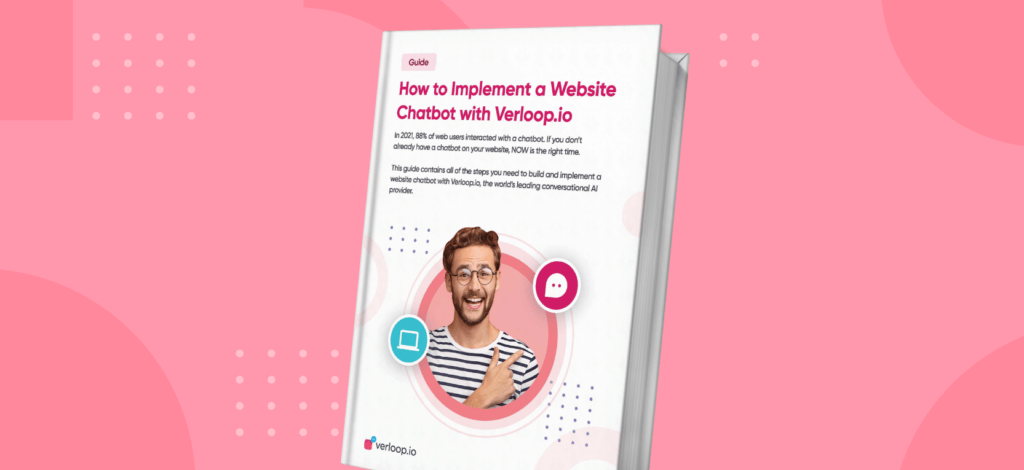
How Do the Best Chatbots for Customer Service Work?
Before we get into the best chatbot examples, let’s first understand how they work.
AI chatbots operate behind the scenes using a combination of technologies that allow them to understand, process, and respond to customer queries intelligently.
At the core is Natural Language Processing (NLP), which helps the AI Agent interpret customer inputs—whether typed or spoken. So, when a customer says “I want to cancel my booking,” the chatbot recognises the intent and triggers the right action automatically.
Next, Machine Learning (ML) kicks in. Over time, the AI Agent learns from past interactions, identifying patterns in customer behaviour and improving responses for similar future queries. This helps the bot get smarter, more accurate, and more personalised with every interaction.
With Verloop.io’s conversational AI platform, you also get access to advanced features like:
-
Generative AI for crafting dynamic, natural-sounding replies that align with your brand tone.
-
Prebuilt AI Agent profiles for chat and voice, so you can easily choose a voice or personality that matches your customer base—be it warm and friendly or fast and to the point.
-
CRM and backend integrations, enabling the AI Agent to fetch user-specific data (like order status, support history, or subscription details) and offer contextual responses in real time.
-
Multilingual support, making your AI Agent capable of serving customers across regions, without needing separate workflows.
In practice, here’s how it works: A customer opens your website and types,
“Where’s my order?”
The AI chatbot authenticates the user, checks the order status in your system, and responds instantly with real-time tracking details—no wait time, no manual effort.
This is how AI Agents streamline operations, reduce response times, and deliver the kind of support today’s customers expect—across every touchpoint.
This is possible because of Chatbots deploying the following 3 methods:
1. Keyword Detection
At the heart of most AI conversations is keyword detection. The AI Agent scans each message for important words and maps them to user intent.
For example, if a customer says, “I want to buy shoes”, the bot identifies “buy” and “shoes” as keywords. This combination signals a purchase intent, prompting the AI Agent to show available shoe collections or redirect to a product page.
This method helps in handling straightforward queries quickly and efficiently.
2. Phrase Detection
AI Agents also work with phrase matching, where the bot compares the user’s message with a database of predefined phrases.
If a user types, “I need to return my order”, the bot detects the phrase and instantly associates it with a return process, even if the exact keywords aren’t used. This helps the AI Agent maintain relevance and accuracy across a wider variety of customer inputs.
It ensures that even slightly altered phrasings like “Can I get a refund for my item?” are correctly recognised and acted upon.
3. Context Detection
This is where AI Agents truly start to feel conversational. With context detection, the bot remembers parts of the previous conversation to respond meaningfully in the current one.
Say a customer asks, “Do you sell shoes?” and follows up with, “Do you sell those in blue?”, the AI Agent connects “those” with the previous topic (shoes) and responds by showing blue shoe options—no need for the customer to repeat themselves.
Context awareness makes interactions smoother and more natural, reducing friction for your users..
Certain chatbots are just better designed than others. They provide better support, in less time and with a quicker turnaround. Read: 5 Ways To Make Your Chatbot More Contextually Intelligent
Here are some chatbot examples of customer service that are doing really well today.
Top 10 Best Chatbot Examples For Customer Service
Some chatbots are making a name for themselves in the market, simply because they are great at what they do. Check out these best chatbot examples used in customer service.
1. MediAssist
MediAssist is a provider of corporate healthcare services. They’re employed by over 7000 different firms, some of whom include companies like Accenture and TCS which have over 400,000 employees each.
MediAssist provides each of these employees with a portal, along with their spouse, parents and/or children. The structure of this plan means that MediAssist could have certain corporate customers who over 1,000,000 + MediAssist portals.
MediAssist has automated customer support and service for these companies using a chatbot. What once required a 200+ member team manning emails and phones has been reduced to a live chat team of under 10% of its original strength. They’ve achieved this by maintaining an average CSAT score of 85%; equivalent to what they achieved with human reps.
Suggested Reading:
- Chatbots Making Mental Health Care Accessible During Pandemic
- Happy Health Is Just A Text Away: WhatsApp Business For Healthcare
- Medical Chatbot: Let’s Chat-A-Bot it

2. Bewakoof
To manage rising customer queries without expanding its team, fashion brand Bewakoof turned to Verloop.io’s AI-powered support. The AI Agent now resolves over 55,000 queries per month, reducing agent workload by 98% through intelligent query deflection.
With an average first response time of just 0.1 minutes, the bot handles post-sales support and FAQs efficiently—from order updates to refunds—providing customers with real-time answers and a smooth, round-the-clock support experience.
By integrating seamlessly with Freshdesk and offering real-time reporting, Bewakoof streamlined operations and improved customer retention—all without compromising on service quality.
3. Unilabs
Global diagnostic leader Unilabs tackled rising customer queries by automating WhatsApp conversations with Verloop.io. The AI Agent now handles 69% of queries without human intervention, streamlining appointment bookings, pricing info, lab locations, and even agent transfers—all via WhatsApp.
This automation reduced manual workload, improved traceability, and ensured faster response times, helping Unilabs achieve a 91.5% CSAT score.
The result?
Higher patient satisfaction, increased repeat users, and a support experience that scales with demand—without compromising quality.
4. Yes Madam
India’s home salon brand Yes Madam turned to Verloop.io’s AI Agent to scale support as demand surged. By integrating conversational automation into their Android and iOS apps, they now resolve 33,375 queries per month, cutting call volumes significantly.
The AI Agent deflects 29.5% of queries without human help, improving response time by 25.3% and driving a 181% surge in customer interactions. While still building on CSAT (currently 36%), the system has reduced agent load and made support smarter, faster, and ready for growth.
5. JetBlue
America’s JetBlue Airways is another great example of a chatbot providing last-minute customer support to travellers on the go. JetBlue offers an SMS chatbot for users to talk to on their iOS or Android devices. More often than not, travellers are in a hurry to gather information and make sure they haven’t skipped doing anything as the boarding time approaches.
JetBlue’s chatbot ensures to avail all last-minute urgent information to users. Whether it’s flight timings, baggage check-ins, reschedules or cancellations – the chatbot is available 24×7 to answer all pressing user questions in real-time.
Also check out: How Flyin, an OTA Platform, Stopped Using Email For Support Entirely After Moving To A Chatbot

6. Nykaa
Nykaa is one of India’s largest e-commerce businesses. The brand engaged 99.7% of all its customers in under 1 minute using a chatbot.
In just the first 30 days of using a chatbot, approximately 1.6 million unique conversations for Nykaa. Over 90% of the customers who participated in these conversations rated the Verloop bot as highly favourable or excellent.
Prior to implementing a chatbot, Nykaa customer service executives spent over 32,000 manhours a month answering and replying to support queries that have now been automated.
Since implementing a chatbot, Nykaa has been able to clear more customer queries, resulting in greater post-purchase customer satisfaction and improved customer loyalty thereafter.
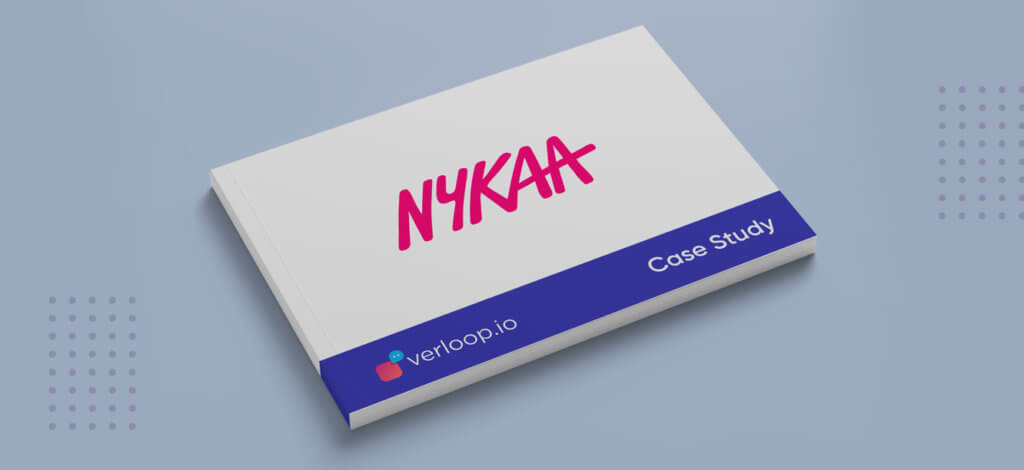
Suggested Reading:
- Supercharge your Chatbot Conversations with These eCommerce Integrations
- Conversational Commerce: Complete Guide For Beginners
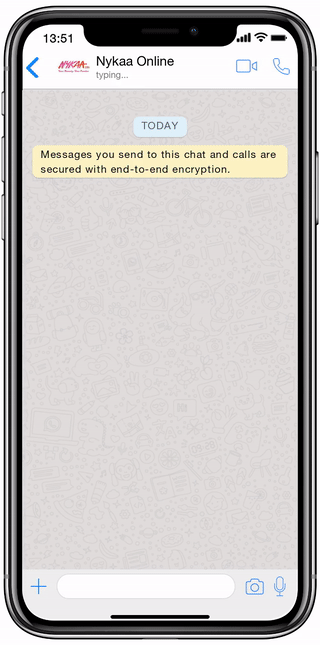
7. AbhiBus
AbhiBus is a leading online bus ticket booking service provider. After implementing a chatbot AbhiBus started engaging 3x customers and resolving 96% of the customer queries in less than 1 minute.
Chatbots are tremendously helpful in travel due to uncertainties that can potentially happen during a journey. Therefore, AbhiBus’s chatbot can assist with a customer’s booking status, cancellations, and delays of buses, flights, trains, etc., 24/7, without any roadblocks, while making the entire process straightforward and quick!
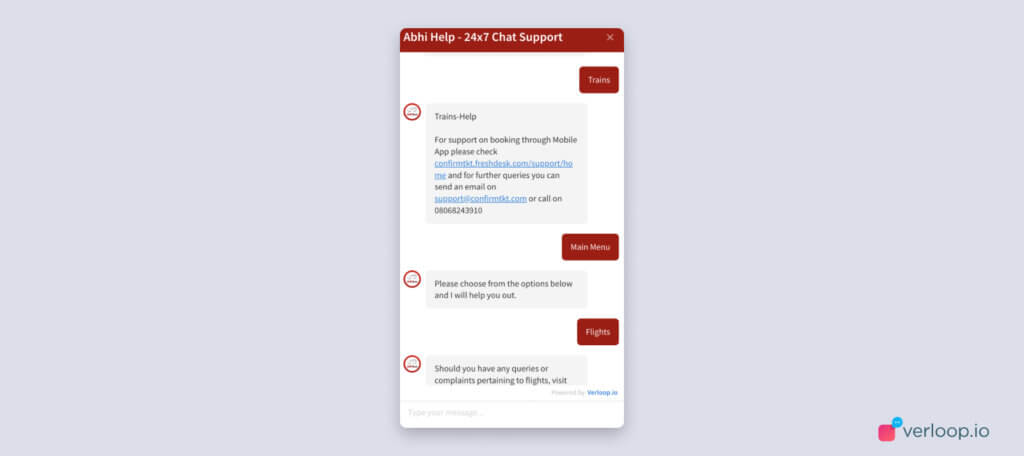
8. Lark
Lark’s main offerings are lifestyle coaching, prevention program, and disease management. Solutions range from hypertension care to diabetes management/prevention and general wellness.
Lark provides its members with one-to-one support from their Personal Coach.
Lark has over 2 million customers who use its ‘Coach’. These are programs created by professors from Stanford, Harvard, and even an Olympic Coach.
Lark sends its members devices like wireless weight scales, a blood pressure monitor or FitBits depending on which program you enlist in.
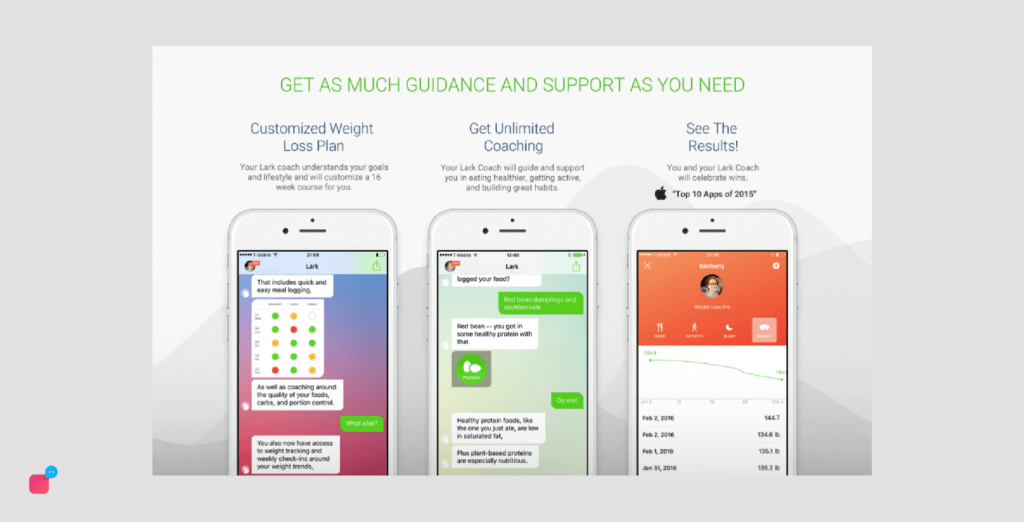
9. Bewakoof
One of India’s top homegrown eCommerce brands, Bewakoof manufactures its own apparel and sells directly to its consumers, without any middlemen. Bewakoof uses a customer support chatbot built on addressing the most common use-cases the brand comes across. Whether it’s helping users with their orders or explaining the upcoming deals and offers, the chatbot is designed to answer all questions a typical eCommerce user fetches answers for.
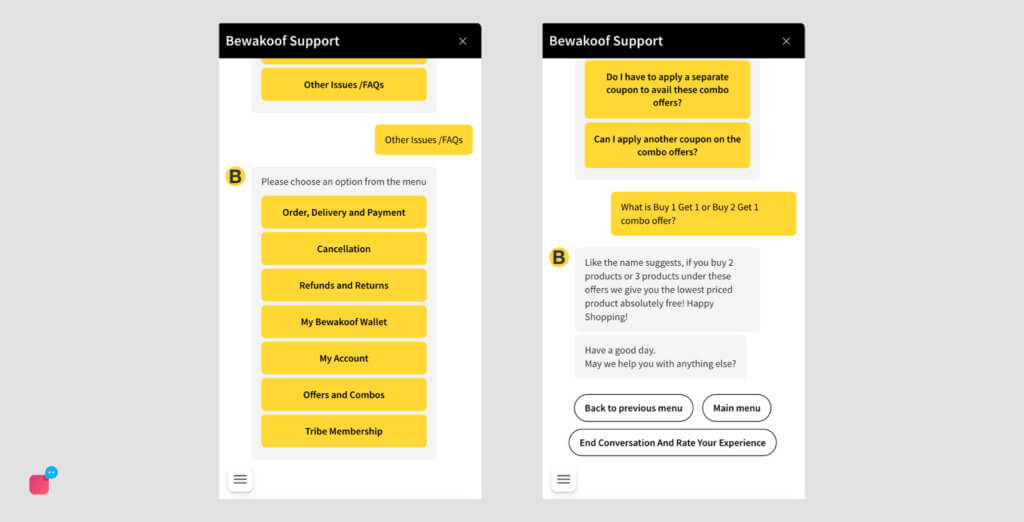
10. Expedia
Expedia’s been ahead of the curve when it comes to tech advancement. From Alexa skills to Skype plugins, they’ve bucked the trend.
The Expedia bot is set up as a hotel search tool that takes in a location and date and finds users five different options.
The bot then links the user to the website, where they can complete their purchase.
When the booking is complete, you’ll get an updated message in your Messenger window with a link to your itinerary.
The bot will also expand into customer service over the next couple of months. Scott Crawford, Expedia’s VP of product management has said that they will, “start layering on additional functionality to meet [customer] needs.”
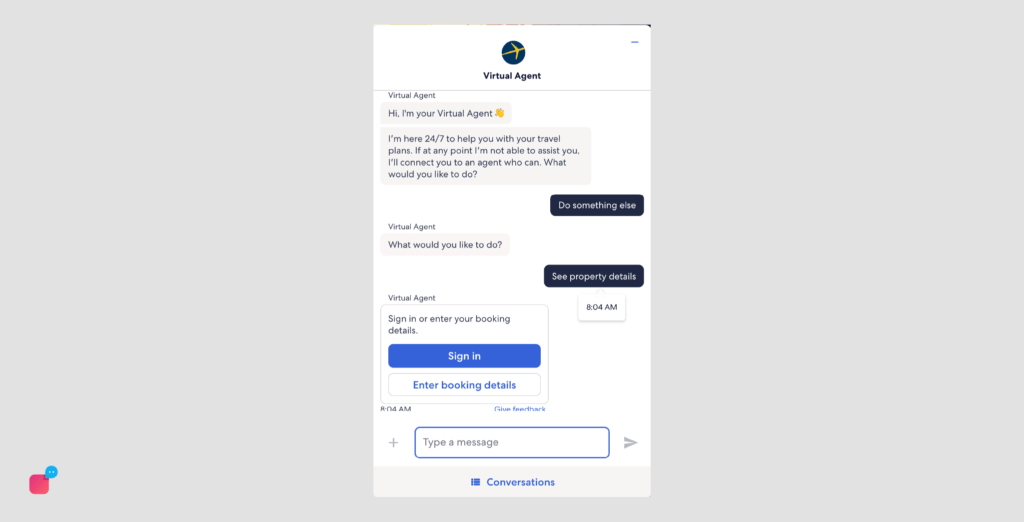
Deploy AI Chatbots to Automate Customer Support
With a constantly changing technological environment, labour-intensive industries are going to undergo structural reform. Facets of business like marketing, sales and support will see conversational automation allow for better engagement and deeper company bonds with their customers. Wondering if your current chatbot is giving you the deal you signed up for? Track its work. Here’s how.

FAQs
1. What is an AI Agent in customer support?
An AI Agent is an advanced, autonomous system that can understand customer queries, take context-aware actions, and resolve issues without human intervention. Unlike traditional bots, AI Agents are capable of multiturn conversations, decision-making, and handling end-to-end tasks such as bookings, cancellations, and refunds.
2. How are AI Agents different from AI Chatbots?
AI chatbots follow fixed scripts and handle basic queries. With Generative AI, they become more human-like—able to understand context, rephrase answers, and handle natural conversations. AI Agents take this further by combining these skills with actions like booking, updating info, or resolving issues autonomously.
3. What kind of queries can be automated with an AI chatbot?
AI Agents can handle a wide range of L1 (Level 1) queries such as booking confirmations, appointment rescheduling, pricing inquiries, service availability, and FAQs. They can also intelligently route complex queries to human agents when needed.
4. How does AI chatbot automation reduce call centre costs?
By deflecting routine queries and reducing the volume of calls agents need to handle, AI Agents save on staffing costs, lower average handling time (AHT), and improve first response time (FRT). This leads to greater operational efficiency and a better customer experience.
5. Can AI chatbots improve customer satisfaction (CSAT)?
Yes. Faster resolution times, 24/7 availability, and reduced wait times contribute directly to better CSAT scores. As seen in the Yes Madam case, even with early adoption, CSAT saw a positive trend as customers appreciated the convenience and responsiveness of automated support.






